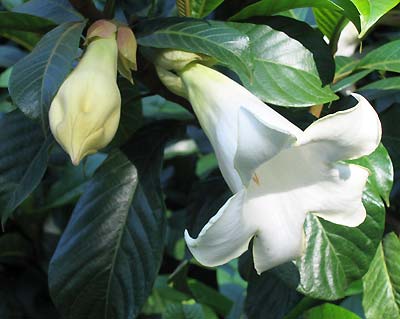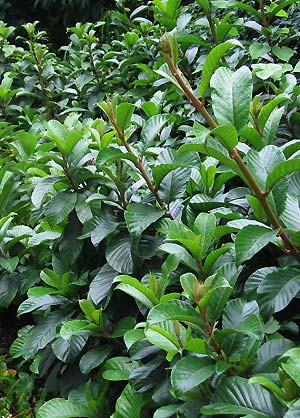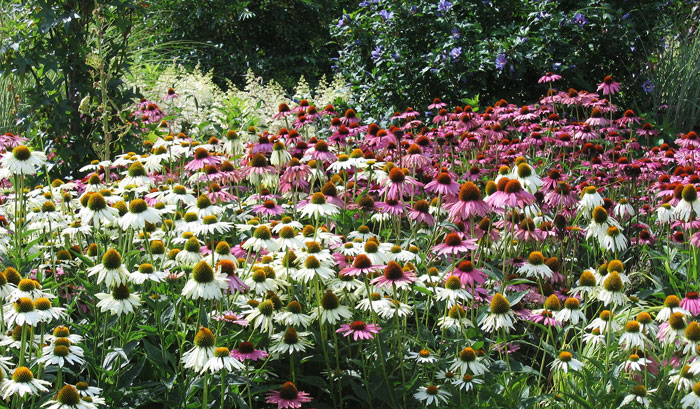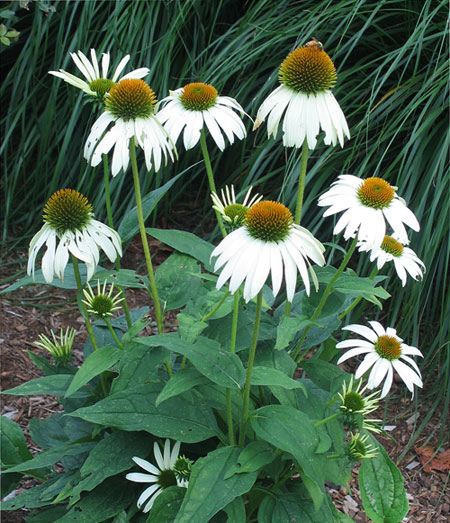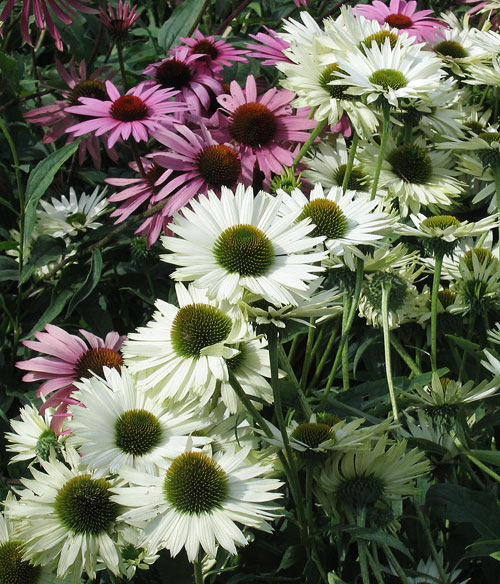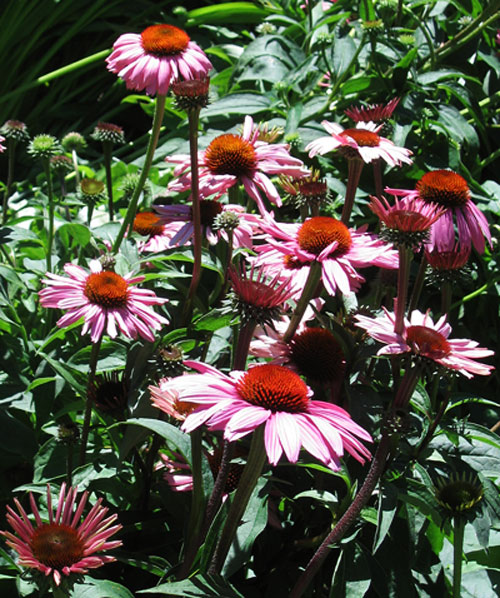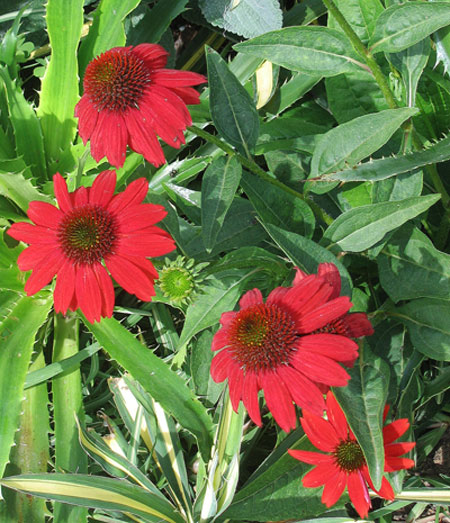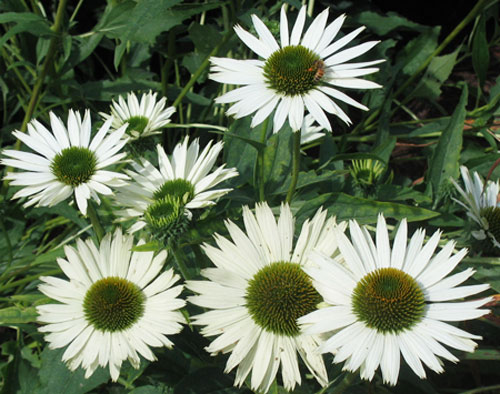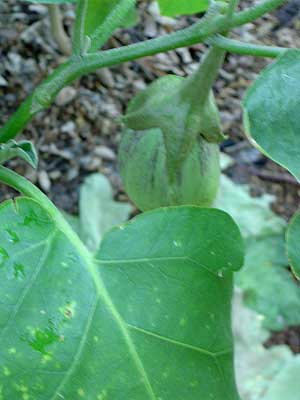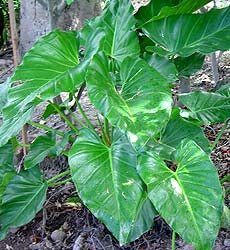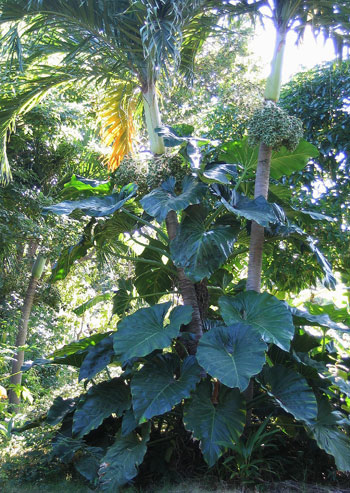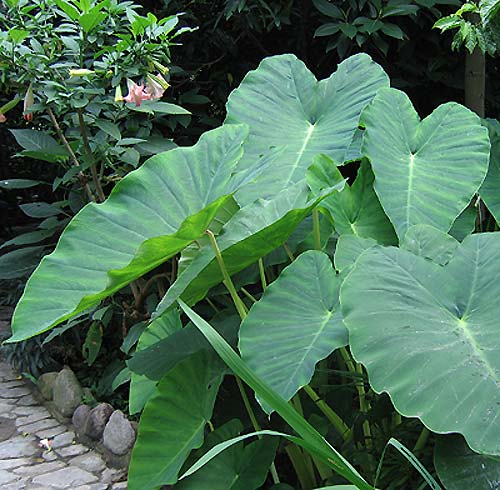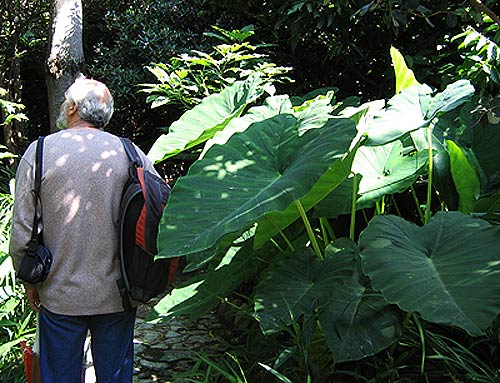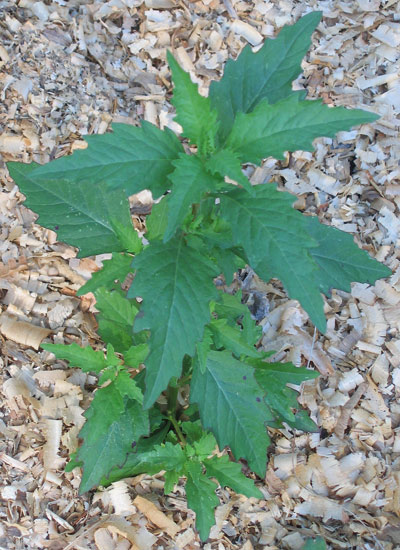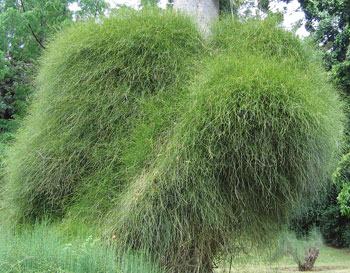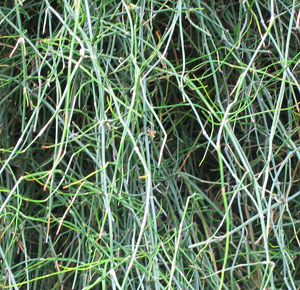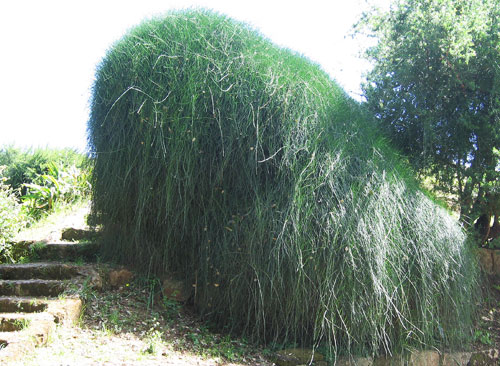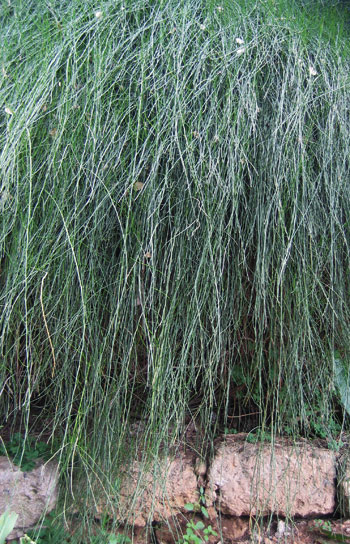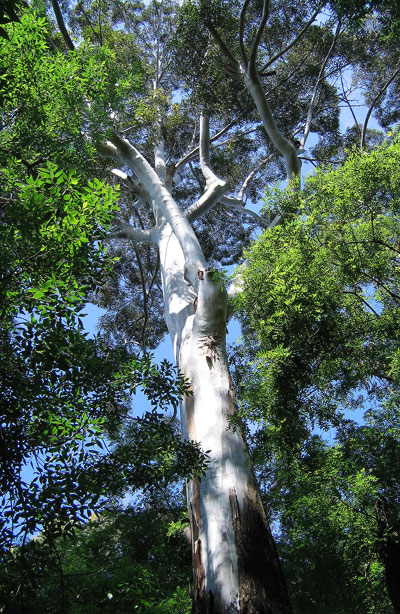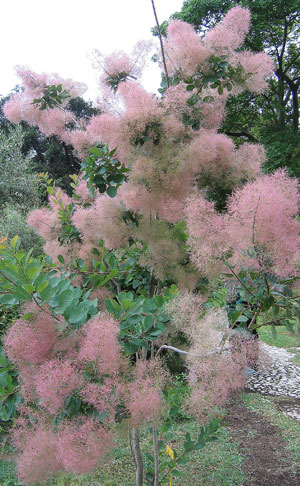| GreenGardeningCookingCuring.com | E
PAGE |
| HOME |
| Tour Our Destination Websites | Taxco-Today.com | Oaxaca-Today.com | Montserrat-Today Site |
| See our silver designs at Krika.com | Read our travel stories and other tales at Krika.com |
|
|
| Echinacea,
Cone Flowers Echinacea Benefits: Comments on the curative capabilities of echinacea vary widely. Its sales numbers are impressive, but research to date hasn't proven its effectiveness. It is believed American Indians made use of echinacea in some form, but only for minor ailments. From: Eastern & central North America Photographed: As is noted below. Planting and Care: These are frost and drought-tolerant long blooming perennial plants growing up to 3 or 4 feet tall. Plant seeds early in the season to ensure blooms before winter arrives. Echinacea likes good soil with a neutral ph. In cooler climates it will do well in full sun. In warm climates, give it a rest from hot afternoon sun. Text and Photographs ©GreenGardeningCookingCuring.com 2018 |
|||
Echinacea,
Cone Flowers Mixed Echinacea |
|||
|
|||
|
|||
|
|||
| **Edible Tree Cactus See The "N" Page NOPAL | |||
|
|||
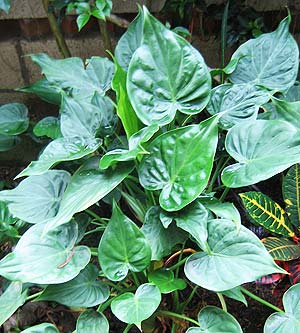 Chinese
Taro, Chinese Ape, Buddha's Hand, Hooded Dwarf Elephant
Ear Alocasia cucullata Chinese
Taro, Chinese Ape, Buddha's Hand, Hooded Dwarf Elephant
Ear Alocasia cucullataThis plant looks very much like a non-vining version of the standard philodendron which grows in offices and homes with little or no care. The leaves are a bit more bumpy and grow to be about the size of my hand. Benefits: This plant is used in traditional Chinese medicine, but as it is poisonous it is used only in external applications. From: Many parts of Asia Photographed: At the Hotel San Buenaventura on Lake Atitlan in Guatemala. Planting and Care: The Chinese taro requires bright shade, lots of moisture and rich loamy soil. It is one of the smaller members of its family and will grow to be only a little over 3 feet high. Text and Photograph ©KO 2010 and ©GreenGardeningCookingCuring.com 2018 |
|||
|
|||
| **Night
Fragrant Elephant Ear, Elephant Ear, Night Scented
Taro Alocasia odora This elephant ear has huge leaves with a flat, not shiny, finish on the surface. It will grow to be at least 5 feet tall. Benefits: It is believed to have beneficial medicinal qualities and it can be eaten, but only after it is well cooked. From: East and Southeast Asia Photographed: In the Botanical Garden at the Hotel Atitlan on Lake Atitlan in Guatemala. Planting and Care: This elephant ear likes a moist rich loamy soil. It will do best with morning or late afternoon sun, avoiding the bright heat of mid day sun. It will also readily accept a bright shady area of the garden. Warning: All parts of the plant are toxic when fresh. Text & Photograph ©KO 2010 and ©GreenGardeningCookingCuring.com 2018 |
|||
|
|||
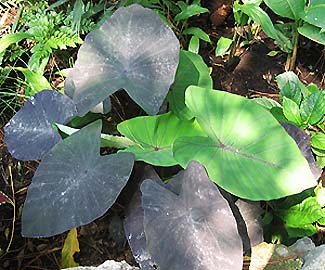 Elephant
Ear 'Black Magic' Colocasia Black Magic Elephant
Ear 'Black Magic' Colocasia Black MagicBenefits: If you have problems with deer and rabbits in your garden, this might be a good choice. From: Tropical Asia Photographed: In the Botanical Garden at the Hotel Atitlan on Lake Atitlan in Guatemala. Planting and Care: This is a perennial plant that will appreciate finding a home in fertile moist soil in a lightly shaded garden area. It will grow to be three feet tall and wide. It is not frost hardy. Warning: All parts of this plant are poisonous if eaten fresh. Text & Photograph ©KO 2010 and ©GreenGardeningCookingCuring.com 2014 |
|||
**Elkhorn Fern See The "F" Page -- FERNS |
|||
| Elkhorn Cactus See the "C" Page -- CANDELABRA PLANT | |||
| Emerald Fern See the "F" Page -- FERNS -- Fox Tail Fern | |||
| Empress Candle Plant See the "C" Page -- CANDELABRA BUSH | |||
| **Energy Bush See The "C" Page -- COCA | |||
| **Epazote
(in Spanish), Wormseed, Jesuit's Tea, Mexican-Tea (in
English) Dysphania
ambrosioides This herb is commonly used in Mexican cooking; it is almost always added to a pot of black beans just before they are finished cooking to enhance their flavor and to reduce abdominal gas. Clamoli, one of our favorite Mexican dishes, is also flavored with epazote. Benefits: Aids digestion and kills intestinal worms. It was and may still be used to treat malaria. From: Mexico Photographed: In our garden and in our kitchen at Lake Atitlan in Guatemala, 2014. Planting and Care: Epazote grows hither and yonder of its own accord. I don't believe there is any significant commercial farming that includes epazote. We've had it in our garden for some years only because it arrived on the wind and we let it grow wherever it landed which included walk ways, the lawn and gardens. It does have a season known only to itself so there will be times when there is none to be had at our home or in the market. Whenever we have had or bought epazote with seeds, we let them dry a bit and then drop them where we'd like to see it grow. Link: http://www.mofga.org/Default.aspx?tabid=846 Text and Photographs ©KO 2007 and ©Green GardeningCookingCuring.com 2014/2018 |
|||
|
|||
|
|||
| Cider
Gum Eucalyptus Tree
Eucalyptus gunnii This is normally considered a very healing plant though I have what seems like an allergy to it and its aroma even in throat lozenges. It is a lovely fast growing tree with pale gray round leaves which can eventually grow to be about 100 feet tall. From: Tasmania Text ©GreenGardeningCookingCuring.com 2012 |
|||
|
